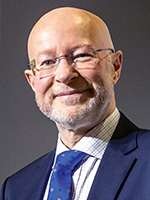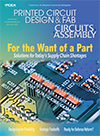Features Articles
 A DoE reveals the packaging type matters less than the process used.
A DoE reveals the packaging type matters less than the process used.
The need for electrostatic discharge (ESD) protection is drilled into production workers from day one in most electronics manufacturing facilities. Most facilities have multiple layers of protection including floor tiles or conductive coating, smocks, individual grounding devices, ESD mats on workstations, and ionizing blowers throughout the production process. There are also multiple layers of protection from conductive totes to metalized bags for product as it ships out. There is a tendency to believe more protection is always better. Given that the seven wastes include both defects and overprocessing, however, from a Lean manufacturing standpoint there is value in analyzing how much protection is required for shipped products. Considering whether multiple layers of protection create a false sense of security with operators involved in pack/unpack operations also has value.
Getting your printing house in order this season – and beyond.

As you read this, hopefully spring will have sprung wherever you are. It’s an agreeable time of year and one of renewal, refresh, and the annual “spring clean.” In that vein, I thought it would be an excellent opportunity to remind readers to take this same approach regarding the printing process, equipment and components. Maintaining all elements of the stencil printing operation is vital for good results, but these essential maintenance tasks are often overlooked in busy factories with even busier staff. If you’re reading this, tick these items off your printing spring cleaning list and watch the process flourish.

The IoT could finally permit RFID to reach its full potential.
A "solution waiting for a problem" is a label often affixed to technologies and inventions. It's perhaps one of the harshest judgements the world could pass, after all the time and care and emotional energy that gets poured into its creation. Yet it's a risk any developer must accept. Often, we cannot know for sure that our pet project will take off in any way – much less that it will achieve the incredible success we have seen in some cases over recent years: Google, cellphones, ARPANet....
 Make sure export-controlled information is going where it's supposed to go.
Make sure export-controlled information is going where it's supposed to go.
In my December column, "One Errant Click and IP Protection is Gone," I wrote of the importance of corporate IP protection. But the safe handling of ITAR or MIL data is even more vital to your company's well-being.
PCB buyers must know what information they're sending and where it's going.
"An export applies to more than just physical product placed in a box being shipped overseas," says Tom Reynolds, an export compliance consultant. "Most companies don't realize the act of electronically sending information out of the country is considered an export."

Getting the North American electronics band back together will take significant time and effort.
Thanks to a series of events and geopolitical shifts – think global supply chain strains caused by a pandemic; import tariffs ricocheting throughout the electronics industry; weapon systems depleted from regional wars – there is an outcry to get the band back together: the band being North American electronics manufacturing.
The band was playing the hits in the late 1980s and early 1990s when North America was in a leadership position as gauged not just by technical development but the ability to produce that technology in volume. The music (read: technical development) is still being written profusely, but where are the bands to play (read: manufacture) the music? That is why the crowd is chanting to get the band back together. The chanting comes in the form of legislation such as the CHIPS Act, as well as from "strategic sourcing" executives searching for local North American suppliers like they had back when the band was alive, well and making the hits.

Adapting Covid-era processes to a more rational demand level.
I frequently say that program management is the most challenging job in the electronics manufacturing services (EMS) industry because program managers are expected to keep programs on schedule with little control over the variables that need to align for them to be successful in their jobs. Supply-demand imbalances in both the supply chain and with customers have made that job even harder. And, just like those late night informercials that tease “but wait, there’s more,” the chaos of the past two years is about to get worse.
The new challenge program managers are starting to see this year is a return to historical demand in many customer industries. Material availability is starting to improve in some areas, but not all part manufacturers are relaxing the draconian noncancellable, non-returnable (NCNR) policies put in place during the supply-demand imbalance. That basically means that even if customer demand is coming down, in some cases, orders scheduled for delivery several quarters from now can’t be adjusted with some suppliers because extended NCNR terms put in place when chipmaking capacity was at a premium are still present.


